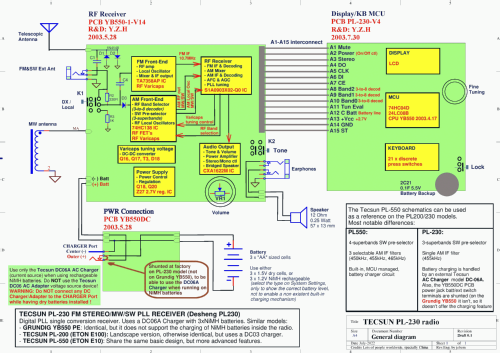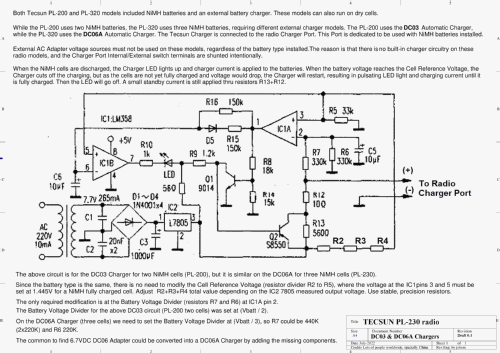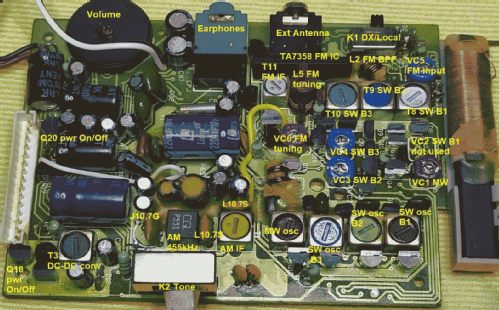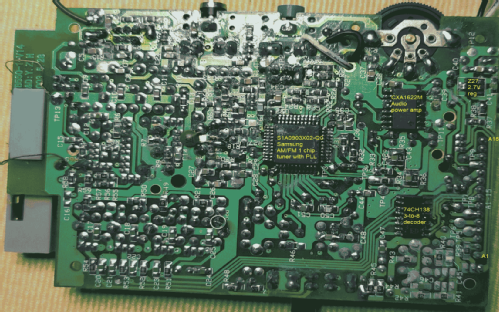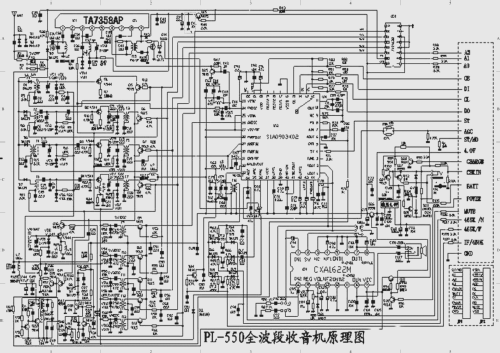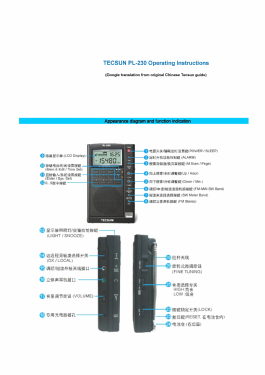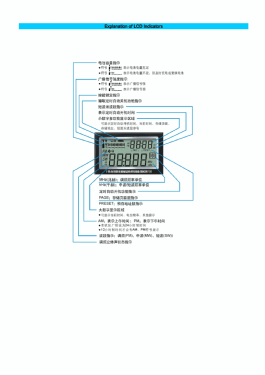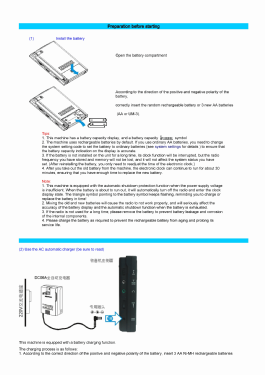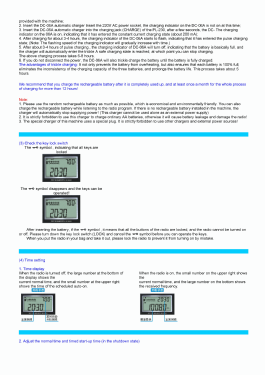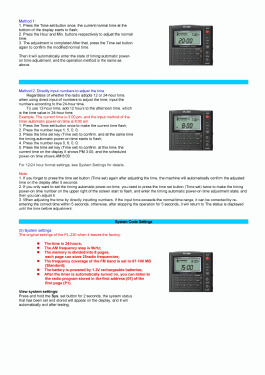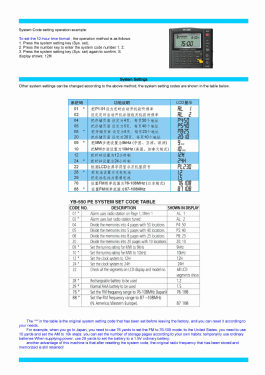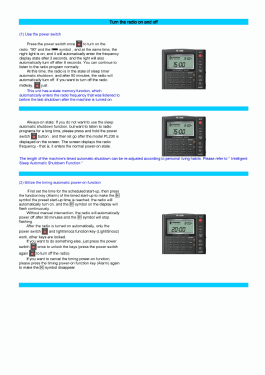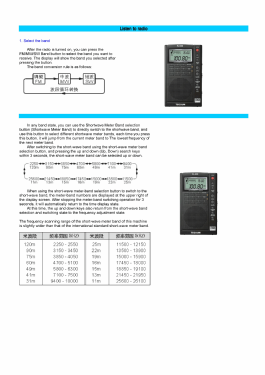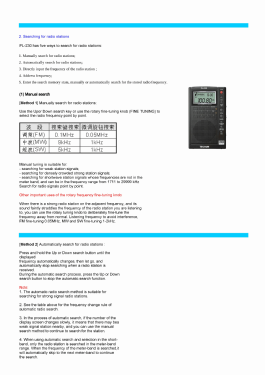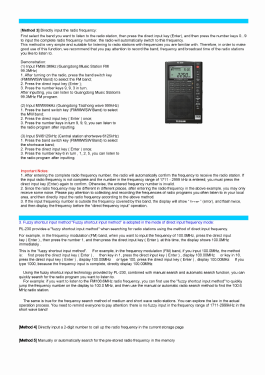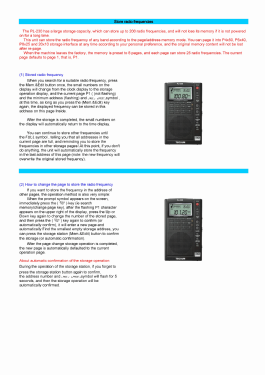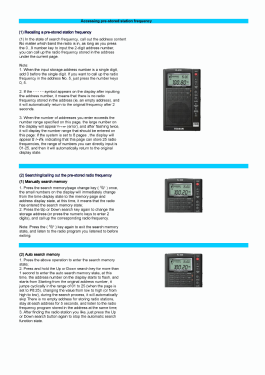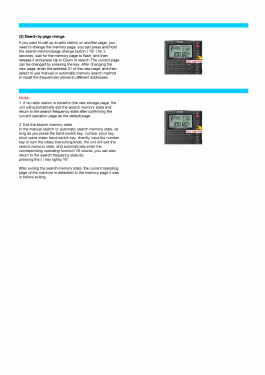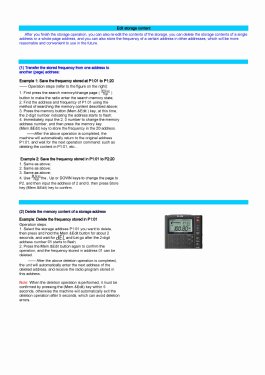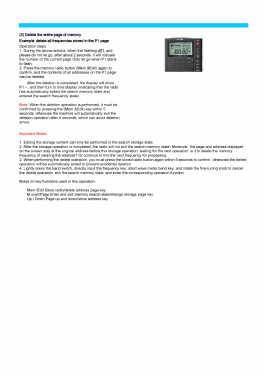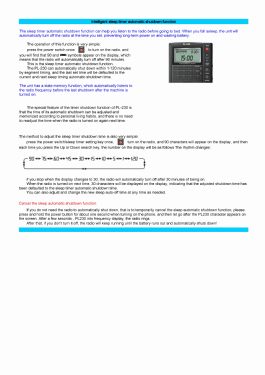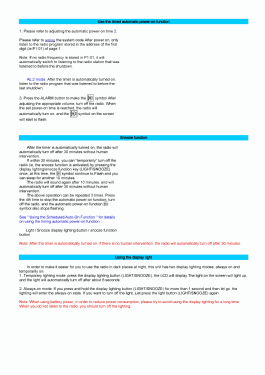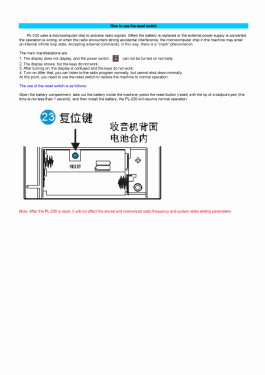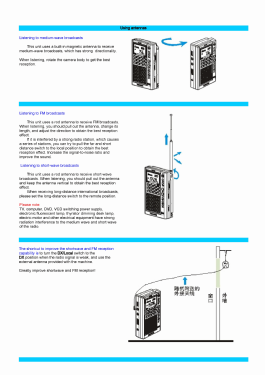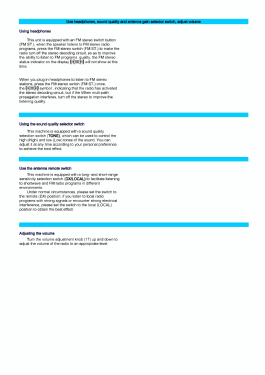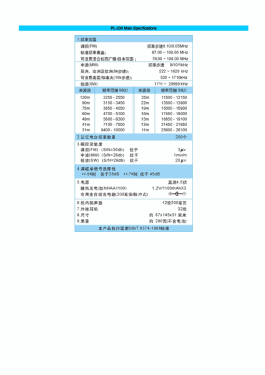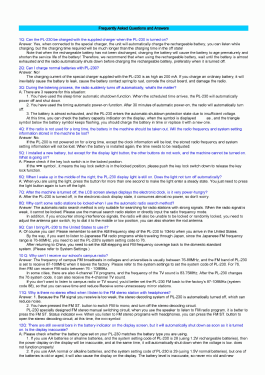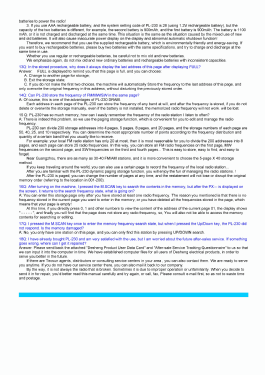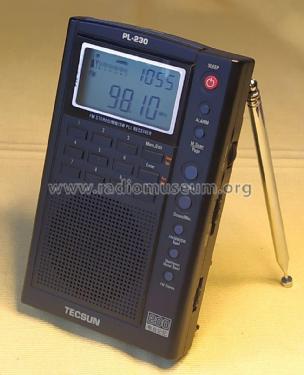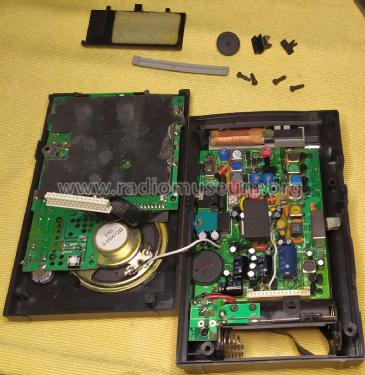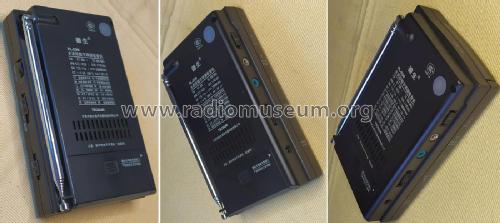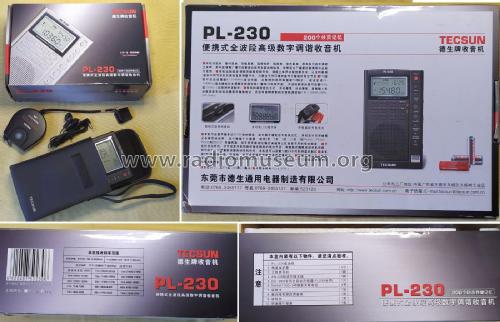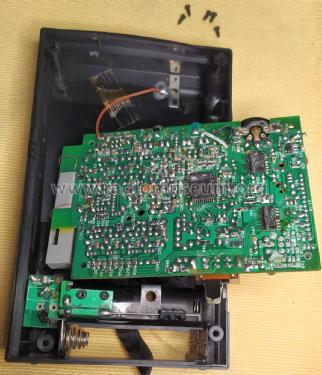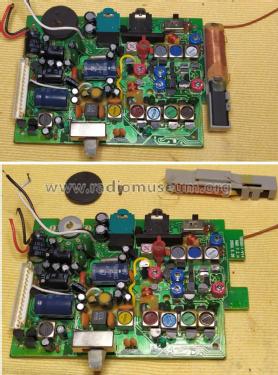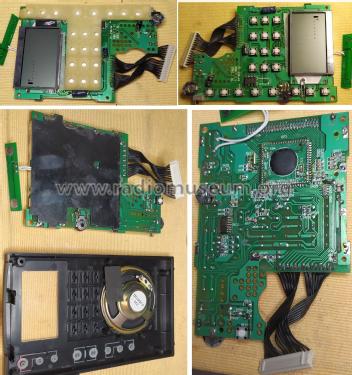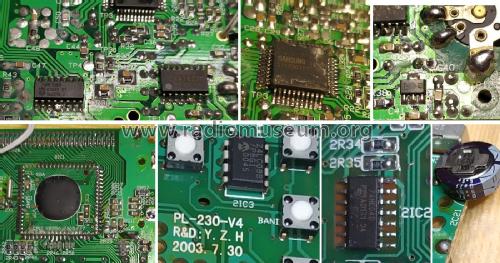FM Stereo/MW/SW PLL Receiver PL-230
Tecsun 德生通用电器制造有限公司 Tecsun General Electric Manufacturing Co., Ltd; Dongguan (Guangdong, SC)
- Fabricante / Marca
- Tecsun 德生通用电器制造有限公司 Tecsun General Electric Manufacturing Co., Ltd; Dongguan (Guangdong, SC)
- Año
- 2003 ?
- Categoría
- Radio - o Sintonizador pasado WW2
- Radiomuseum.org ID
- 339775
Haga clic en la miniatura esquemática para solicitarlo como documento gratuito.
- Numero de transistores
- Hay semiconductores.
- Principio principal
- PLL, Phase-locked loop
- Gama de ondas
- OM, más de dos OC y FM
- Tensión de funcionamiento
- Pilas + jack (etc.) para alimentación externa. / AA: 3 x 1.5 or AA Ni-MH: 3 x 1.2 / ? Volt
- Altavoz
- Altavoz dinámico (de imán permanente) / Ø 5.7 cm = 2.2 inch
- Material
- Plástico moderno (Nunca bakelita o catalina)
- de Radiomuseum.org
- Modelo: FM Stereo/MW/SW PLL Receiver PL-230 - Tecsun 德生通用电器制造有限公...
- Forma
- Portátil de bolsillo , menor de 20cm.
- Ancho, altura, profundidad
- 87 x 145 x 31 mm / 3.4 x 5.7 x 1.2 inch
- Anotaciones
-
The Tecsun PL-230 (Desheng PL230) FM Stereo/MW/SW PLL Receiver features 200 memory presets, DX/Local selector, external antenna jack, earphones jack, lock switch, sleep timer, alarm and clock. While frequency scan uses the keyboard, fine tuning uses a digital rotary knob.
It runs on 3 x AA sized batteries, either dry cells or rechargeable Ni-MH batteries that can be charged using a dedicated Tecsun DC-06A charger connected to the radio charger jack.
Frequency bands
- FM: 76 - 108 or 87 - 108 MHz selectable
- Tuning steps: 100 kHz (Fine tuning: 50kHz)
- MW:
- 522 - 1620 kHz
- Tuning steps: 9 kHz (Fine tuning: 1 kHz)
- 520 - 1720kHz
- Tuning steps: 10 kHz (Fine tuning: 1 kHz)
- 522 - 1620 kHz
- SW: 1711 – 29999 KHz
- Tuning steps: 5 kHz (Fine tuning: 1 kHz)
The Grundig Yacht-Boy 550 is identical to the PL-230, but it does not charge batteries inside the radio (see details in the PL-230 schematic diagram).
Brief technical details
The PL-230 was designed around a Samsung S1A0903X02-Q0 AM/FM 1chip tuner with PLL integrated circuit. The FM band uses a TA7358 as front-end. The SW band uses a 3-superband active amplified pre-selector with one FET per superband. A CXA1622M IC handles the audio power amplification.
- FM: 76 - 108 or 87 - 108 MHz selectable
- Peso neto
- 0.230 kg / 0 lb 8.1 oz (0.507 lb)
- Mencionado en
- - - Manufacturers Literature
- Autor
- Modelo creado por Jose Mesquita. Ver en "Modificar Ficha" los participantes posteriores.
- Otros modelos
-
Donde encontrará 36 modelos, 35 con imágenes y 22 con esquemas.
Ir al listado general de Tecsun 德生通用电器制造有限公司 Tecsun General Electric Manufacturing Co., Ltd; Dongguan (Guangdong, SC)
Colecciones
El modelo FM Stereo/MW/SW PLL Receiver es parte de las colecciones de los siguientes miembros.
Contribuciones en el Foro acerca de este modelo: Tecsun 德生通用电器...: FM Stereo/MW/SW PLL Receiver PL-230
Hilos: 1 | Mensajes: 1
I got this radio sold as working but with "poor sound".
I found out excessive current consumption, well above 100mA, even with the volume at minimum. The RF sensitivity was good on all bands.
Several electrolytic capacitors were found to have resistive leakage and the main offender had just 61 Ohm. Most of them had high ESR and the measured capaticance was well below the nominal value.
I decided to replace all of them as they were from either from one or another of the two chinese brands used in this production.
After having new caps installed, the current consumption reduced to normal levels around 30mA at minimum volume level. However, the sound distortion remained as before.
At first I suspected of a defective audio power IC due to the initial high current consumption, but after switching the 12 Ohm speaker with a 8 Ohm spare unit I had at hand, the sound quality improved drastically.
Pressing the speaker cone, I could hear a typical scratching noise when there is something abnormal in the magnetic coil-inductor assembly. As the speaker and cabinet were clean, with no signs of metal filings, I decided to dismantle the speaker only to find out that indeed the voice coil was rubbing against the armature at one of the sides.
How this happened is a mystery. There are no physical damage marks on the radio case or speaker, and the radio has never been opened before, judging by the foam stickers applied to the PCB.
I can only conclude that somehow, the armature magnet moved over time (unlikely), or it was a factory defect.
I decided to replace it with another Chinese speaker, but as the original uses 12 Ohm impedance (it is connected in bridged mode), replacing it with a common to find 8 Ohm unit would result in poor low end ressponse (the speaker is connected thru two 220uF caps). So initially I installed two 330uF caps to maintain the same low frequency ressponce using the 8 Ohm speaaker at hand. The bass response improved a bit, but as these are small speaaker units we can not expect a goos bass response.
Then I found a chinese supplier offering 16 Ohm speakers of the same size (57mm diameter, just 12mm weight). Installing this unit resulted in a more relaxed sound, with better bass response. I believe the 8 Ohm unit was overloading the audio IC due to the bridge mode setup.



Anexos
Jose Mesquita, 14.Aug.22
